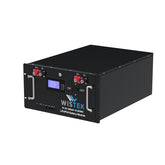Understanding the Various Types of Golf Carts and Their Differences
Golf carts have evolved significantly from their humble beginnings as simple utility vehicles on golf courses. Today, they serve various purposes, from personal transportation in gated communities to maintenance vehicles on large estates. Understanding the different types of golf carts and their unique features can help you make an informed decision when choosing the right one for your needs.
- Golf Carts: An Overview
- Golf Carts: Comparing Key Features
- Golf Carts: Choosing the Right One for Your Needs
Golf Carts: An Overview
Golf carts are small vehicles designed primarily for transporting golfers and their equipment around a golf course. However, their versatility has led to widespread use in various other settings, including gated communities, resorts, and even farms. They come in two primary power options: electric and gas-powered.
Electric Golf Carts
Electric golf carts are powered by rechargeable batteries and are known for their quiet operation and low maintenance requirements. They are ideal for use in environments where noise reduction is a priority, such as residential areas and golf courses.
Advantages of Electric Golf Carts
Quiet Operation: Electric motors run silently, providing a peaceful ride.
Low Maintenance: Fewer moving parts mean less frequent maintenance.
Eco-Friendly: Produce zero emissions during operation.
Disadvantages of Electric Golf Carts
Limited Range: Typically can travel 25-50 miles on a single charge, depending on battery capacity and terrain.
Charging Time: Batteries can take several hours to recharge.
Battery Replacement: Batteries need to be replaced every 4-6 years, which can be costly.
>>See also Troubleshooting a Black and Decker 36V Lithium Battery That Wont Charge
Gas-Powered Golf Carts
Gas-powered golf carts use internal combustion engines and are known for their power and longer range compared to electric models. They are suitable for hilly terrains and longer distances.
Advantages of Gas-Powered Golf Carts
Longer Range: Can travel greater distances without refueling.
Quick Refueling: Refueling is faster compared to recharging electric carts.
Powerful Performance: Better suited for hilly terrains and carrying heavy loads.
Disadvantages of Gas-Powered Golf Carts
Noisy Operation: Engines produce noise, which can be disruptive.
Higher Maintenance: Require regular maintenance, including oil changes and engine servicing.
Emissions: Produce exhaust emissions, contributing to air pollution.
Golf Carts: Comparing Key Features
When choosing between electric and gas-powered golf carts, consider the following factors:
1. Performance and Power
Electric golf carts offer smooth acceleration and are ideal for flat terrains. Gas-powered carts provide more torque, making them suitable for hilly terrains and longer distances.
2. Maintenance and Upkeep
Electric carts have fewer moving parts, leading to lower maintenance costs. Gas carts require more frequent maintenance due to their complex engines.
3. Environmental Impact
Electric golf carts produce zero emissions, making them more environmentally friendly. Gas carts emit pollutants, contributing to environmental degradation.
4. Cost Considerations
Electric carts generally have a higher upfront cost but lower operating costs over time. Gas carts may have a lower initial cost but higher fuel and maintenance expenses.
>>See also How to Charge a 12V Lithium Battery Step by Step Guide
Golf Carts: Choosing the Right One for Your Needs
Consider the following scenarios when choosing between electric and gas-powered golf carts:
Residential Communities: Electric carts are preferred due to their quiet operation and zero emissions.
Golf Courses: Electric carts are commonly used for their quietness and low maintenance.
Rural Areas or Farms: Gas carts are suitable for longer distances and rough terrains.
Understanding the various types of golf carts and their differences is crucial in making an informed decision. Electric golf carts offer quiet operation and low maintenance, making them ideal for residential areas and golf courses. Gas-powered carts provide more power and longer range, suitable for rural areas and farms. Assessing your specific needs and environment will help you choose the right golf cart to suit your requirements.
Whether you opt for an electric or gas-powered golf cart, it's essential to consider factors such as performance, maintenance, environmental impact, and cost. By doing so, you can ensure that your choice aligns with your needs and preferences.
In conclusion, both electric and gas-powered golf carts have their unique advantages and are suited for different purposes. By understanding their differences, you can make an informed decision that best fits your requirements.
Understanding the various types of golf carts and their differences is crucial in making an informed decision. Electric golf carts offer quiet operation and low maintenance, making them ideal for residential areas and golf courses. Gas-powered carts provide more power and longer range, suitable for rural areas and farms. Assessing your specific needs and environment will help you choose the right golf cart to suit your requirements.
Whether you opt for an electric or gas-powered golf cart, it's essential to consider factors such as performance, maintenance, environmental impact, and cost. By doing so, you can ensure that your choice aligns with your needs and preferences.
In conclusion, both electric and gas-powered golf carts have their unique advantages and are suited for different purposes. By understanding their differences, you can make an informed decision that best fits your requirements.



















Leave a comment
All blog comments are checked prior to publishing